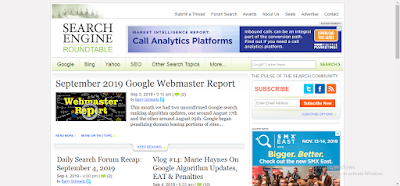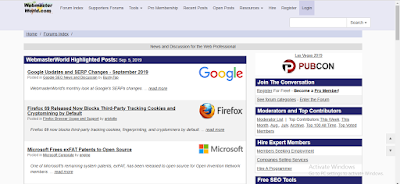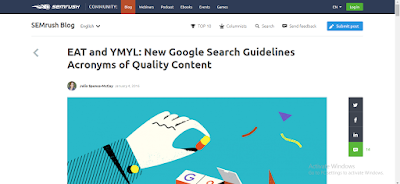How to Create (and Complete) an SEO Audit Report for Your Clients
The first step in working with a new SEO client is creating an SEO audit report.
An SEO audit helps you evaluate the current state of the client’s site and create a roadmap for improvements. You can see where the client is succeeding, failing, and making mistakes. And in the process, you get the information you need to create a client-facing document that describes problems and what you will do to fix them.
As you take on your next project, use this SEO audit template to create a report that will guide your process, help you collect relevant information, and build trust between you and your clients.
Download your free SEO Audit Report template
What to Include in an SEO Audit Report
An SEO audit report serves two major purposes:
- Guiding your work
- Educating the client
As you go through an SEO audit checklist, create a document that outlines what you need to do and clearly explains the work to the client.
Many clients don’t have extensive knowledge of SEO, so it’s your job to educate them. Use your audit to explain SEO by:
- Listing SEO factors in recognizable categories.
- Describing what each SEO factor is and why it matters.
- Indicating whether the client’s site meets the standards for the factor. You may note this as a “pass” if the site meets the standards or a “fail” if there is a problem that needs to be resolved.
- Explaining what action plan is needed to resolve the problem as it specifically relates to the client’s site.
By adding this information to your report, the audit helps the client begin to understand SEO, see your plan, and get a good look at the state of their website.
So start SEO projects with a template that includes a list of SEO factors and descriptions. Then for each new client, fill in the report with data that relate specifically to their sites.

How to Gather Data for an SEO Audit Report
For each new client, you’ll need information about his or her site to fill in the SEO audit report. There are many tools and processes to help you collect this information.
Or you can simply and quickly collect the data from one resource using Alexa’s SEO Audit tool.
The tool acts as a website audit checklist and automatically inspects over 25 factors on the client’s site. The tool then provides an overall grade for the website and individual grades for specific industry-standard categories.

This gives you a great starting point for your audit. With an overview of five categories, you can quickly identify areas that need improvement.
Additionally, the report includes grading for 25-plus factors and step-by-step recommendations for resolving issues if they appear. You can use this report to see what needs work, get the exact directions for fixing it, and fill in your client-facing audit report.

How to Fill in an SEO Audit Report
As you create a report for your client, add the following factors and descriptions to your SEO audit template. Then, use information from Alexa’s website audit tool to describe the action plan needed to resolve any issues as they relate specifically to the client’s site.
For each SEO element, the Alexa report provides information to help you improve the factor. A few examples of those reports are included in this list.
Duplicate Title Tags
- Description: When more than one page on a website has the same title tag, it makes it difficult for search engines to correctly categorize and rank each page. You want each page to have its own unique title to increase the likelihood it will appear in search engine results.
- Client Action Plan: In the SEO audit report, list the URLs with duplicate title tags that need to be rewritten.
Alexa’s audit tool also acts as an on-page SEO checker and lists how many pages on the client’s site have duplicate titles and provides the URLs with duplicate titles.

Missing Title Tags
- Description: Each page on a website should have its own unique title tag. The title tag tells search engines what the page is about, which helps it rank better.
- Client Action Plan: List the URLs with duplicate title tags that need to be rewritten.
Long Title Tags
- Description: Search engine results can only display up to 65 characters in a title tag; title tags for each page should be no longer than that.
- Client Action Plan: List the URLs with title tags that are too long and need to be rewritten.
Multiple Title Tags
- Description: Because search engines use title tags to categorize and understand pages, every page needs its own unique title tag. Pages on a website should not use the same title tag, as it can confuse search crawlers and negatively impact SEO.
- Client Action Plan: List the URLs that have multiple title tags that need to be deleted.
Hostname
- Description: Sites allow users to visit them through different hostnames (i.e., a site may use both “http://domain.com” and “http://www.domain.com”). All hostnames should point to the same site. This tells search engines it is one site rather than two different sites.
- Client Action Plan: Let the client know if you need to redirect “www” or “https” versions of the site.
The Alexa Site Audit includes a technical audit checklist, which shows if all site versions point to the correct URL.

Reachability
- Description: The deepest level of your content should be no more than three clicks from the homepage. When website architecture is structured this way, it makes it more accessible for both users and search engines. Sites with proper architecture are more visible in search as engine crawlers can find more pages as they move through the site.
- Client Action Plan: Give data on the number of pages that are too deep in the site architecture, and list the pages that are more than three clicks from the homepage.
The Reachability section of the Alexa Site Audit report includes a list of pages and the number of clicks it takes to get to those pages. It also includes all the URLs of pages that are deeply nested.

Redirects
- Description: Redirect links take users from one URL and send them to another URL. A site should not use too many redirect links because it makes it difficult for search engines to crawl the site.
- Client Action Plan: List the redirect URLs that must be edited.
Anchor Text
- Description: Anchor text is a snippet of copy that is linked on a webpage. Search engines use anchor text to help identify what the destination page is about. The anchor text used on a site to link to other internal pages should be descriptive. Sites should use anchor text that describes the click-thru page rather than generic terms like “click here.”
- Client Action Plan: Create a list of the top generic anchor text terms you need to revise. You may also include the URLs of the pages where the anchor text appears.
In the Alexa SEO audit report, you can see a list of all the anchor text that could be improved on the target site. The report lists ambiguous anchor text snippets along with the URLs of where the copy appears and the pages they link to, so you can create a plan to improve the SEO content.

Broken Links
- Description: When there are links on a website that point to a nonexistent URL, they are broken. Broken links negatively impact SEO, as they send search engine crawlers to wrong pages and waste their resources.
- Client Action Plan: List the pages with broken URLS that need to be fixed.
Dead End Pages
- Description: A dead-end page is one with no links to other internal pages. It is a dead end for the user because they have no way to navigate to another page on the site. Each page should have a link to another page, as this keeps users on a site.
- Client Action Plan: List the pages with no links and must have links added to them.
Page Not Found
- Description: A website should have a “page not found” error page setup. This page displays if a user clicks on an internal link that is broken. This “404” page tells users the link is broken without creating a negative user experience, and it tells search engine crawlers the page is an error.
- Client Action Plan: Tell the client if you need to create a “404” page for his or her site.
Long URLs
- Description: For URLs to be optimized for SEO, they should be no more than 128 characters. At this length, the full URL will show in search engine results. Plus, these links are better for sharing on social media platforms.
- Client Action Plan: List the URLs that are too long and must be revised.
Use the Alexa report to get a list of too-long URLs.

Duplicate Content
- Description: A website should never publish the same copy on more than one page. If the same copy is published on more than one page, it is duplicate content. This creates problems for search engine crawlers and leads to poor placement in search results.
- Client Action Plan: List pages with duplicate content. You may also include a description with how you will resolve the problem by either revising the content or using a rel=“canonical” markup.
Duplicate Meta Descriptions
- Description: Just as a page needs its own unique title tag, it also needs its own unique meta description. A meta description is a blurb that explains the page, helps search crawlers categorize it, and appears on search engine result pages. Each page on a website should have a unique meta description detailing what the page is about.
- Client Action Plan: List the URLs of pages that need a new meta description.
Too Many Links
- Description: While it is good to have links on a webpage, you can have too many links. When pages have a high volume of links, search engine crawlers may think the page is low quality or spam. You should keep the number of pages with more than 100 links to a minimum and avoid pages with more than 1,000 links.
- Client Action Plan: List the URLs of pages with more than 100 links.
Server Errors
- Description: When a website cannot send a requested page, it may have a server error. These types of server errors can negatively impact SEO, as they prevent search engine crawlers from finding the pages on a site.
- Client Action Plan: Advise the client if there are server errors that need to be addressed.
Robots.txt
- Description: Robots.txt is a file on a web server that prevents search engine crawlers from accessing parts of or an entire site. When this file is present, it severely restricts a website’s ability to show up in a search.
- Client Action Plan: Advise the client if there is a robots.txt file restricting access to the site.
The Alexa tool performs a website SEO test that indicates if multiple crawlers can access the site.

Session IDs
- Description: A session ID is information on a website used to track a visitor’s activity. It is often included in a URL. Using this type of data can negatively impact search rankings as search engine crawlers have trouble understanding session IDs.
- Client Action Plan: List the URLs with session IDs that need to be removed.
Search Engine Marketing
- Description: Through search engine marketing (SEM), you can attract users to a website by paying to appear in search. Websites should use search engine marketing by paying for keywords that are popular with users and related to their site.
- Client Action Plan: List the top keywords that will help the client attract users through paid search. Include popular and relatively inexpensive keywords.
The Alexa Site Audit uses information about the target site and keyword data to provide a list of potential keywords to use in SEM campaigns. The keywords also include:
- An Opportunity score (this rates the potential of the keyword to produce results)
- A Query Popularity score (this rates how popular the term is with users)
- A Competition score (this indicates how much competition there is for the term)
These allow you to choose the best keywords for upcoming paid campaigns.

On-Site Links
- Description: Search engines favor the pages on a website that have a higher number of inbound links. A page that is frequently linked to by other pages will have a higher authority in search. Important pages should have a high number of inbound links directed at them.
- Client Action Plan: List important pages that don’t have a high number of inbound links.
Low Word Count
- Description: Webpages with a low word count often receive poor placement in search results. Pages with 300 or more words will be more likely to show up in a search.
- Client Action Plan: List the URLs of pages that need to be revised to add more content.
The Alexa tool will check on-page SEO elements and provide a report of pages with a low word count. You can use this list to decide which pages need additional content.

Image Descriptions
- Description: Using descriptions for images helps optimize webpages for SEO because it adds text to graphics. Without the descriptions, images cannot be crawled by search engines. Adding text helps improve a page’s SEO authority.
- Client Action Plan: List the pages on the site with images that don’t include image descriptions.
The Alexa Audit Tool creates a report with pages that have missing image descriptions. It shows the images that are missing the descriptions on each page.

Speed Analysis
- Description: The amount of time it takes a website and webpage to load impacts its ability to perform well in SEO. Pages with slow load speeds may rank lower than pages with higher load speeds.
- Client Action Plan: Include a speed analysis of the client’s site as well as their competitors’ sites. List ways you will improve the page load speed.
Insecure Forms
- Description: Websites that request secure information from users should use a secure connection (“https”). Without this secure connection, others may intercept the users’ information, such as emails and passwords.
- Client Action Plan: Advise the client if they have an SSL certificate. If they don’t, outline a plan to add one.
Metadata
- Description: HTML tags on a website can share information about the software used to build the site. This information could help someone attack or compromise a website. It’s important to remove these tags to protect a website from malicious users.
- Client Action Plan: In your SEO audit report, list the pages on the site with metadata that may expose the site to hackers.
Web Analytics
- Description: Continually assessing, analyzing, and improving a site requires analytics. A website should include code that collects analytic information on every page of the website. Without this code, it is difficult to see website traffic statistics, determine how a site is performing, and create plans to improve the site.
- Client Action Plan: Indicate if analytics are being tracked, which pages are missing codes, and if you need to install an analytics code.
The Alexa site audit report notifies you if any pages are missing the code.

Social Sharing
- Description: Tags can be added to a website to help users share pages and posts through social media. Because pages that have many shares on social media may perform better in search, it is important to have tools that make sharing from a website easy.
- Client Action Plan: Indicate if there are social sharing tags, which pages are missing tags, and if you need to install social sharing tags.
Links from Top Sites
- Description: When popular websites link to a third-party website, it improves SEO authority. The more high-ranking websites link to a website, the better it will perform in a search. You want and need many sites to link back to your site.
- Client Action Plan: Indicate how many sites are currently linking to the client’s site. Also, include a plan for how to improve that number and get additional sites to link back to the client site.
As you go through each of the SEO factors in the Alexa report, you can assess the status of the client site and create a plan for improvements.
You can also create an SEO audit report to lay the foundation for trusting relationships with your clients. The information shows clients you are using white-hat SEO tactics that aren’t about gaming Google. It outlines your strategic plan of action – and it educates clients, so they feel confident and comfortable while working with you.







